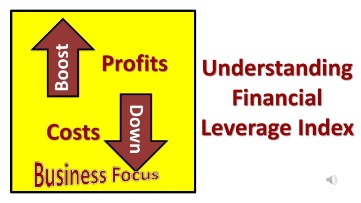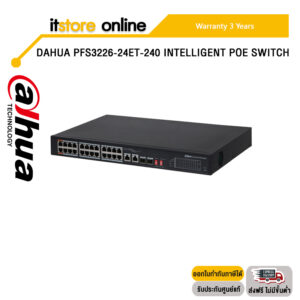
We compare Xero vs. Sage so you can decide on the perfect accounting solution for your needs. It allows three users for its Essentials plan ($55 per month) and 25 users for its top plan, the Advanced ($200 per month). Xero, on the other hand, offers unlimited users for all plans. This can be helpful if your company is growing fast, or you simply want the reassurance that there’s no limit to how many people can be part of the team. Keep in mind that the ability to use multiple currencies in the software and invoice is limited to the company’s highest tier, at $70 per month.
Xero vs. Sage: Deciphering Cloud Accounting for Your Business
Not the end of the world, but it could be irksome if you have an urgent problem. You’ll find no shortage of reports and features on this software. It’s arguably most effective for an eCommerce platform, but any SME would benefit from using Xero as accountancy software without breaking the bank.
Subscribe to our newsletter for the latest accounting insights and updates
Where Sage excels is its lack of limits on clients and invoices. This can be great for freelancers doing a ton of business each month. One drawback is that the base plan only has support for one user.
Traditional On-Premise Software: A Familiar Yet Limited Approach
As you begin your journey to decide between Xero and Sage, it’s essential to consider factors such as pricing, available features, and the ease of integration with your existing systems. Both of these software packages will make a big difference calendar year to your business, and technically there is little to separate them. While neither software is flawlessly simple, Xero is probably easier to pick up if you have no idea – or inclination – how to get started with running a business payroll.
QuickBooks Online: A US-Centric Powerhouse for Small Businesses
Yes, most cloud accounting solutions, including Xero, Sage Business Cloud, and QuickBooks Online, offer free trials. Utilise these trials to assess the platform’s suitability for your accounts receivable job description business. The ever-evolving business landscape demands adaptability and agility. A Sage 50 migration to a cloud accounting platform can unlock significant benefits for your business.

Entering these bills is easy thanks to receipt capture with Hubdoc. This helps you see when all your bills are due and schedule batch payments accordingly. Xero and Sage’s main selling point is their intuitive invoicing systems. Sage lets you create invoices directly from quotes and estimates, send them to customers and automatically track outstanding invoices to see what you’re owed. It also partners with Stripe so you can take card payments with ease. This media release includes and is in parts based on assumptions or estimates.
Xero is more affordable, with pricing plans starting from £15 per month, and extending to £55 per month for Ultimate, covering payroll and accounting for up to 10 people, as well as analytics. Both Xero and Sage offer features to import financial data from other software providers using tools like MoveMyBooks, ensuring data accuracy and ease of transition. In terms of data safety, Xero stores your information on the cloud, preventing data loss due to corrupted hardware or theft, while Sage requires regular backups. With Xero, you can invite unlimited additional users to your account at no extra cost, which is particularly beneficial for businesses that require collaboration between multiple team members.

While human error will always play some role in security breaches, you can be confident in your accounting platform when it comes to keeping your information safe. Navigating the world of cloud accounting software can feel overwhelming. While Xero and Sage Business Cloud are prominent players, QuickBooks Online (QBO) deserves a closer look, especially for small businesses in the United States. This comprehensive analysis will delve into QBO’s functionalities, compare it to its competitors, and guide you towards the perfect cloud accounting fit for your business. Which company offers the best business debt management services?
Xero is a great option for large teams and small- to medium-sized businesses that need high-level accounting systems. It’s also a good fit if you want to integrate Gusto Payroll to your accounting platform. The Early subscription is tailored for solopreneurs and business owners who are just getting started. You’re able to send 20 quotes and invoices per month, enter five bills, reconcile bank transactions, capture bills and receipts with Hubdoc and view a short-term cash flow and business snapshot. Most cloud accounting solutions offer free trials, including QuickBooks Online, Xero, and Sage Business Cloud.
- Dive in with us to see which is the best accounting software for your business.
- It allows three users for its Essentials plan ($55 per month) and 25 users for its top plan, the Advanced ($200 per month).
- It also integrates with over a thousand apps, meaning if you can’t find a native feature you need, you can likely add it on.
- Additional functionality includes recurring invoices, automated invoice reminders, bulk invoicing, and invoice replication.
- As discussed, Sage and Xero are more engineered toward medium-sized enterprises.
It includes everything the Pro Accounting plan offers, plus many additional features. In our Xero vs Sage comparison, we explore these popular solutions in detail. Both made our top accounting software list because of their strong invoicing and bank reconciliation features. Cloud accounting refers to accounting software that resides on remote servers and can be accessed through a web browser or mobile app.
Sage, on the other hand, has somewhat limited integration options, as it primarily supports Sage-related products. This means that, when compared to Xero, your options for customising your software and addressing unique needs may be more restricted with Sage. If you’re still wavering on the fence about whether Sage or Xero is the best payroll software for your needs, take a look at the table below.
Xero enables businesses to automatically update accounts to be HMRC compliant and submit financial information with a simple touch. Also, the ‘Xero Me’ mobile app enables employees to access their timesheets and pay slips, and enable owners to access detailed payroll reports and payroll history. Unlike Sage, Xero is cloud-based so financial information can be accessed across any device such as a phone or tablet, ultimately enabling business owners to work from home. However, although Sage 50 offers a cloud-based system, it does require an additional cost and upgraded package.
Similarly, Sage’s mobile app, Sage Business Cloud Accounting, offers the ability to create invoices, record expenses, and view key financial reports. Using these mobile apps, you can ensure that your financial information is always at your fingertips, allowing you to stay on top of your business accounts. For the price, Xero is a powerful tool that can help you manage everything from inventory to file storage.
Xero is all-in-one accounting software that is particularly geared towards new businesses, and a younger demographic of entrepreneurs and business owners. The Xero App Store is giant, featuring over consolidated financial statements guide 1,000 apps you can add on. But having the options available means there’s always likely a solution for your issues. You can sort by specific function or narrow down the options by industry.





